If you’ve ever bought chayote (also known as chow chow or vegetable pear) from the market, you might be surprised to learn that growing chayote at home is incredibly easy — and rewarding. With just one fruit and a little bit of space, you can start your very own chayote plant that will produce dozens of fruits for months.
Chayote (Sechium edule) is a climbing vegetable vine from the gourd family. It’s widely grown in tropical and subtropical regions because it loves warm weather and sunshine. This hardy plant not only gives you tender, green fruits but also beautiful vines that can cover fences or trellises, adding a lush green touch to your home garden.
In this guide, we’ll walk you through everything you need to know to grow chayote at home — from choosing the right fruit and preparing the soil to harvesting sweet, abundant yields. By the end, you’ll realize why so many gardeners are amazed at how easy and productive this plant truly is!
What is Chayote and Why Grow It?
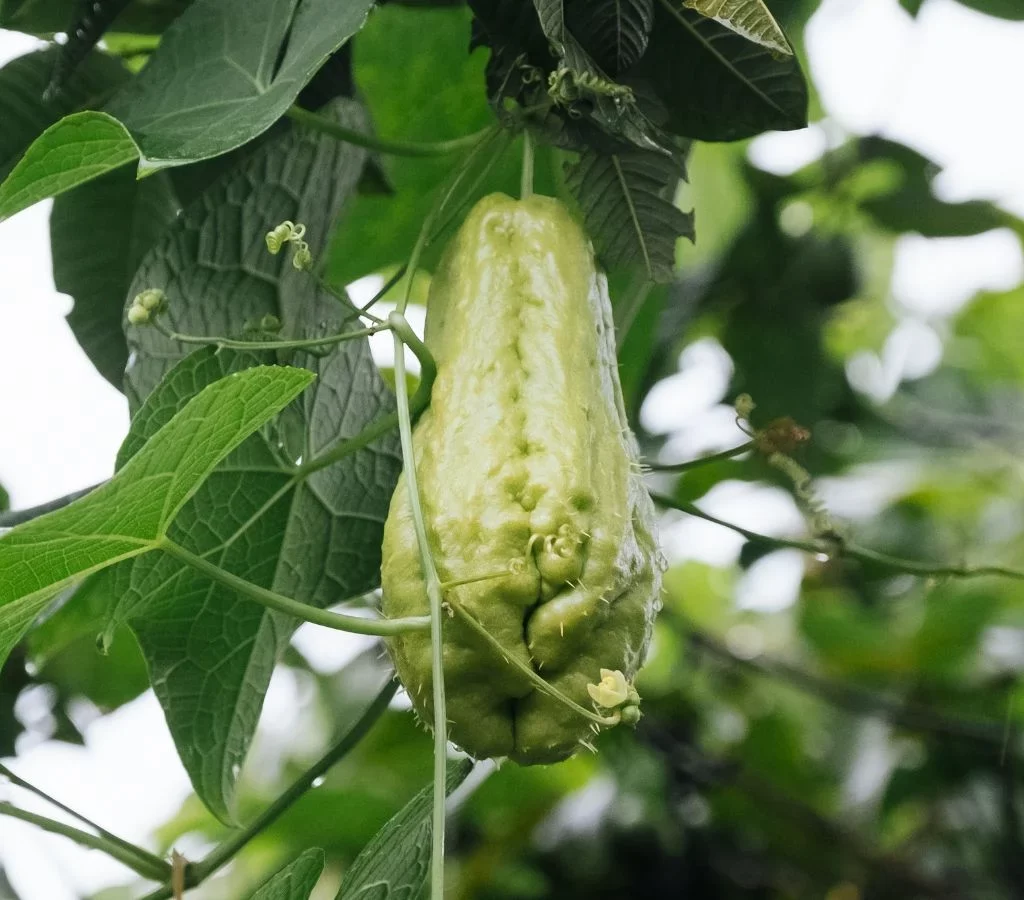
Chayote, also called vegetable pear, mirliton, or chow chow, is a pear-shaped, green gourd with a crisp texture and mild flavor. It’s packed with nutrients, including vitamin C, potassium, and dietary fiber, making it a healthy addition to your meals.
But beyond its nutritional benefits, chayote is a low-maintenance, high-yielding plant. Once established, a single vine can produce 20–60 fruits per season — enough to share with friends and family.
Here’s why home gardeners love growing chayote:
- It’s easy to grow from a single fruit.
- It produces lots of fruits with minimal care.
- The entire plant — from leaves to shoots to fruits — is edible.
- It’s perfect for balconies, terraces, or backyard gardens.
Step 1: Choose the Right Chayote Fruit
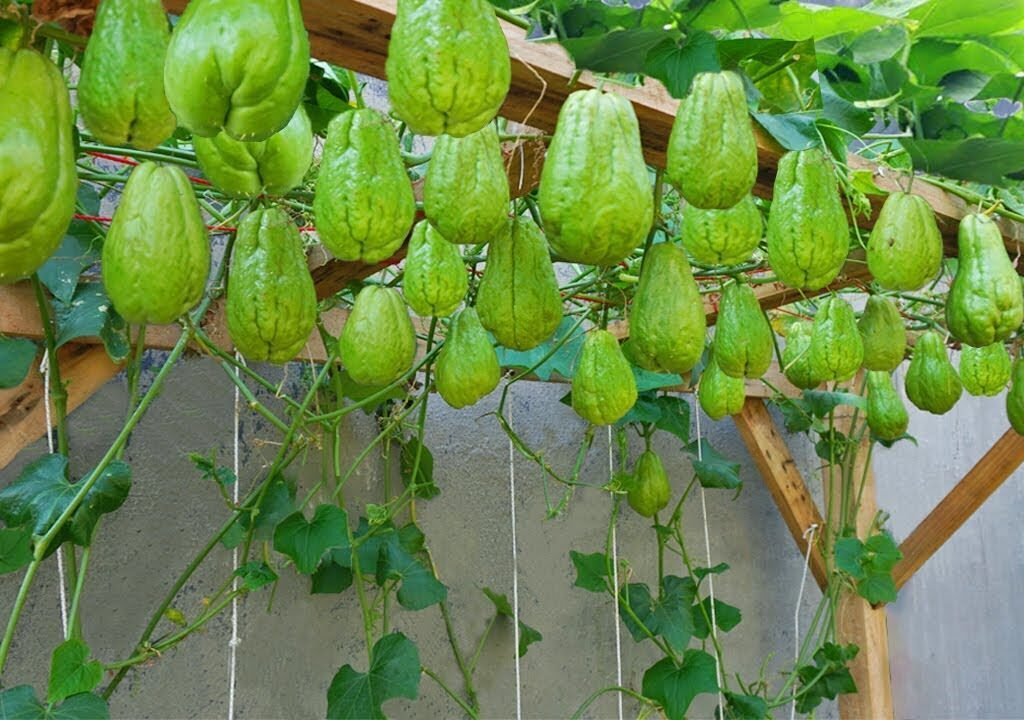
Unlike most vegetables that are grown from seeds, chayote grows directly from the whole fruit because the seed inside doesn’t separate easily.
When choosing a fruit to plant:
- Select a mature, healthy chayote that’s slightly wrinkled and light green.
- Avoid fruits that are too soft, damaged, or moldy.
- If possible, use organic or locally grown chayote for better germination.
Place the fruit in a warm, dry area for 1–2 weeks until you notice a small sprout emerging from the narrow end. This means it’s ready for planting.
Step 2: Preparing the Planting Container or Garden Spot
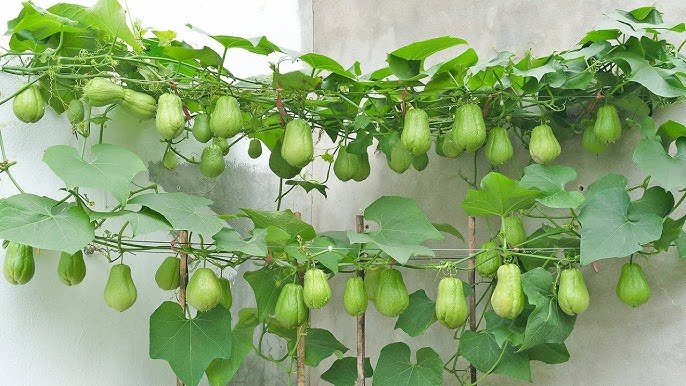
Chayote plants are vigorous climbers with large root systems, so they need plenty of space to grow. You can plant them either directly in the ground or in a large container if space is limited.
If using a container, make sure it is:
- At least 24 inches deep and 20 inches wide.
- Made of plastic or clay with good drainage holes.
- Placed where it gets 6–8 hours of sunlight daily.
For garden planting, choose a sunny, well-drained location near a fence, trellis, or wall where the vine can climb freely.
Step 3: Prepare the Soil
Chayote loves rich, loose, and well-drained soil. A slightly acidic to neutral pH (6.0–7.0) works best. Prepare the perfect soil mix using:
- 40% garden soil
- 40% compost or cow dung manure
- 20% sand or coco peat for aeration
Mix thoroughly and fill your container or planting pit. To enrich the soil further, add a handful of bone meal, neem cake, or organic fertilizer. This ensures your plant gets enough nutrients to produce large, healthy fruits.
Step 4: Planting the Sprouted Chayote
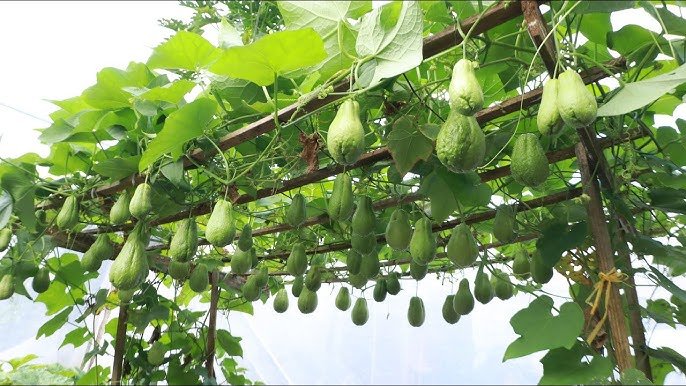
Now that your chayote has sprouted, it’s time to plant it.
- Dig a small hole about 4–5 inches deep.
- Place the fruit on its side, with the sprout pointing slightly upward.
- Cover half of the fruit with soil, leaving the sprout exposed.
- Water gently to settle the soil.
This method allows the sprout to grow upward while the seed develops roots beneath the soil.
If you’re planting multiple chayotes in the ground, space each plant about 10 feet apart, as the vines can grow very long and wide.
Step 5: Provide Support for the Vines
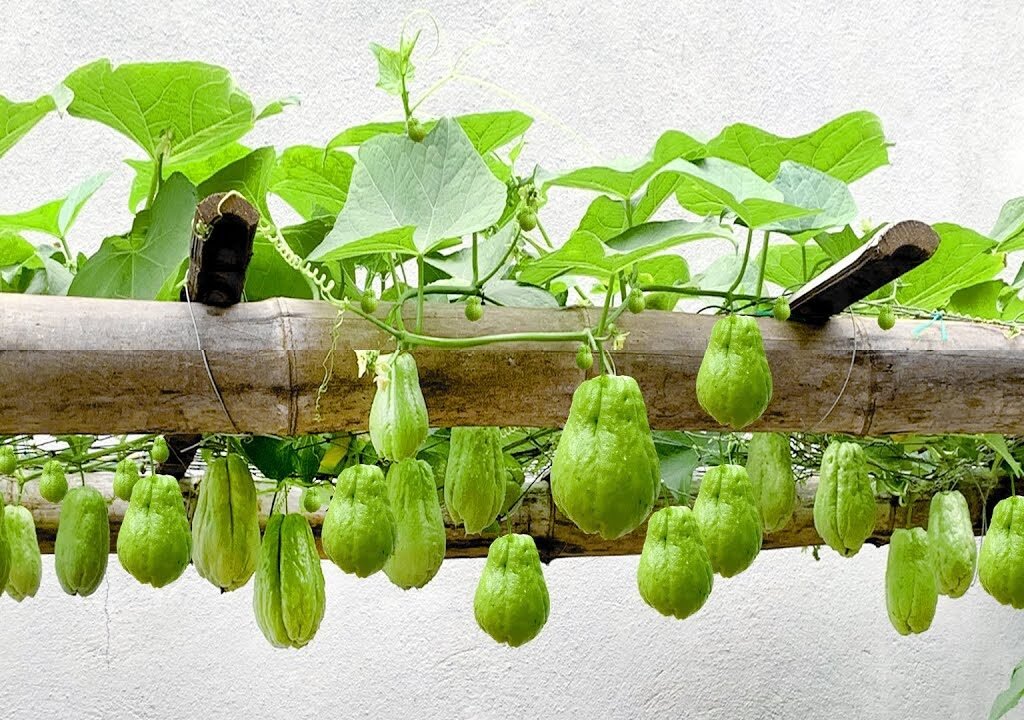
Chayote is a climbing vine and needs strong support for proper growth.
- Set up a bamboo or metal trellis near the container.
- You can also train the vine to grow over a pergola, fence, or rooftop railing.
- As the vine grows, gently guide and tie it to the support using soft twine.
This helps the plant spread evenly, keeps fruits off the ground, and improves air circulation — reducing the risk of pests and rot.
Step 6: Watering and Sunlight Needs
Chayote plants love consistent moisture but dislike waterlogging. Here’s how to care for them:
- Watering: Water regularly to keep the soil moist but not soggy. During summer, water daily in the early morning.
- Sunlight: Ensure the plant receives at least 6–8 hours of sunlight every day.
- Mulching: Add a layer of dry leaves, straw, or coco husk on top of the soil to retain moisture and prevent weeds.
This steady care encourages strong root development and healthy vine growth.
Step 7: Feeding and Fertilizing
Chayote vines are heavy feeders. To keep them growing vigorously and producing lots of fruits, feed them every 15–20 days with natural fertilizers such as:
- Compost tea or vermicompost – for nitrogen and general nutrition.
- Banana peel fertilizer – for potassium to support fruit formation.
- Eggshell powder – for calcium to strengthen stems and prevent rot.
Avoid excessive use of nitrogen-rich fertilizers, as they may cause the plant to grow more leaves than fruits.
Step 8: Pollination and Flowering
After about 8–10 weeks, the chayote vine will start to produce small yellow flowers. Like many gourds, chayote has separate male and female flowers on the same plant.
Pollination usually happens naturally through bees and insects. However, if you’re growing the plant in a balcony or terrace with fewer pollinators, you can hand-pollinate:
- Identify a male flower (long stalk, no tiny fruit behind).
- Gently rub its pollen onto the female flower (which has a small bulge — the future fruit).
This simple step can dramatically increase fruit production!
Step 9: Pest and Disease Management
Chayote is a hardy plant, but it can occasionally attract pests like aphids, whiteflies, and fruit flies. To control them naturally:
- Spray neem oil solution (2 teaspoons per liter of water) every week.
- Mix garlic and chili spray to deter insects.
- Keep the area around the plant clean and dry.
If leaves turn yellow or show fungal spots, remove the affected ones immediately and avoid overhead watering.
Step 10: Harvesting Chayote
The most exciting part comes after 3–4 months — harvest time!
You’ll know your chayote fruits are ready when:
- They’re light green, firm, and 4–6 inches long.
- The skin is tender, and you can easily press it with your fingers.
Use a pair of scissors or a knife to cut the fruits, leaving a small piece of the stem attached. Regular harvesting encourages the plant to produce even more fruits.
A healthy chayote vine can yield 20 to 60 fruits per season, and if cared for properly, it can live for several years!
Bonus Tip: Regrow from Your Own Harvest
Here’s the best part — once you harvest chayote, you can replant one of the mature fruits to grow another vine.
Just repeat the same sprouting and planting process, and soon you’ll have multiple vines climbing and fruiting around your home. This makes chayote one of the most sustainable and self-renewing vegetables you can grow.
Health and Culinary Benefits of Chayote
Chayote is not only easy to grow but also highly nutritious. It’s:
- Low in calories and high in fiber, helping with digestion.
- Packed with vitamin C, promoting immunity and healthy skin.
- Rich in antioxidants, which help reduce inflammation.
- Versatile in the kitchen – can be steamed, sautéed, stuffed, or added to curries and salads.
Even the young shoots and leaves can be cooked like spinach, offering a variety of delicious meal options.
Common Mistakes to Avoid
- Overwatering: Causes root rot and fungal diseases.
- Poor Sunlight: Leads to weak vines and fewer fruits.
- Skipping Support: Without trellises, vines become tangled and unproductive.
- Ignoring Pollination: Results in flowers dropping without forming fruits.
- Harvesting Too Late: Overripe fruits become tough and lose flavor.
By avoiding these small errors, you can ensure a strong, fruit-laden chayote plant all season long.
Conclusion
Growing chayote at home is truly surprisingly simple and incredibly rewarding. From a single fruit, you can nurture a lush green vine that produces dozens of tender, delicious chayotes every year.
Whether you’re a beginner gardener or someone with limited space, this plant adapts easily to containers, balconies, or backyard gardens. With proper sunlight, regular watering, and a bit of love, you’ll soon find yourself harvesting more fruits than you ever expected.
So don’t wait — pick up a chayote from your local market today, let it sprout, and start your home-grown chayote adventure. Once you see how many fruits you get from such little effort, you’ll be amazed that you hadn’t started sooner!
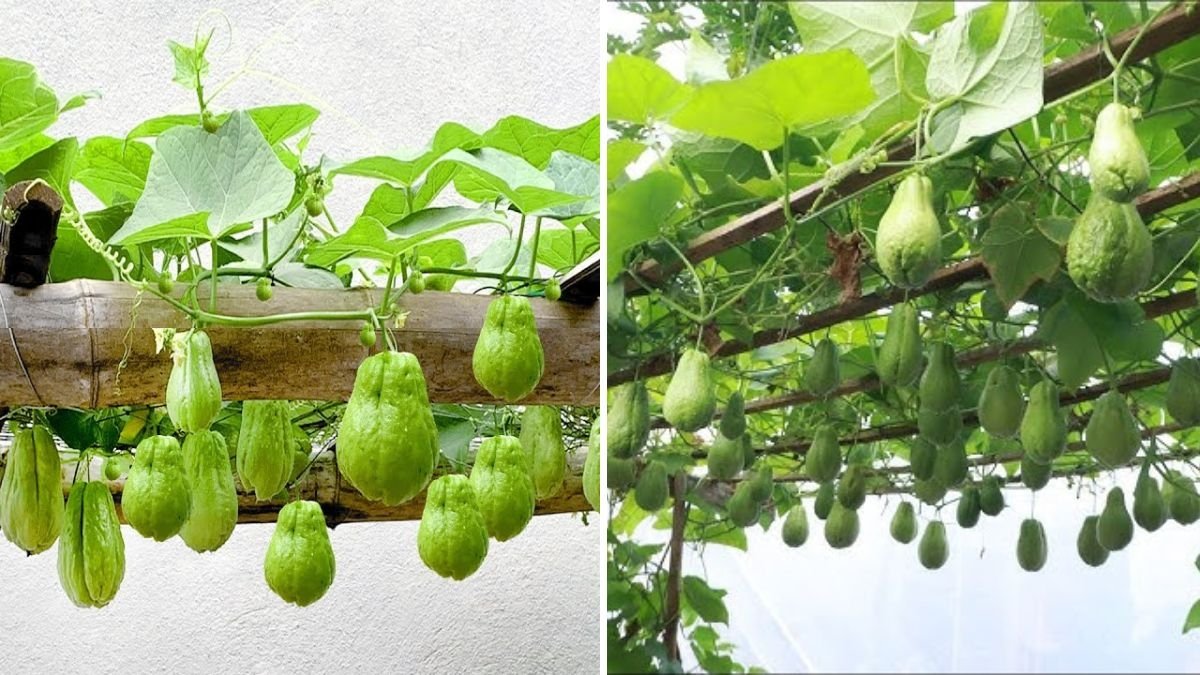





Leave A Comment